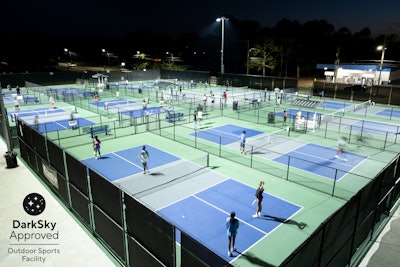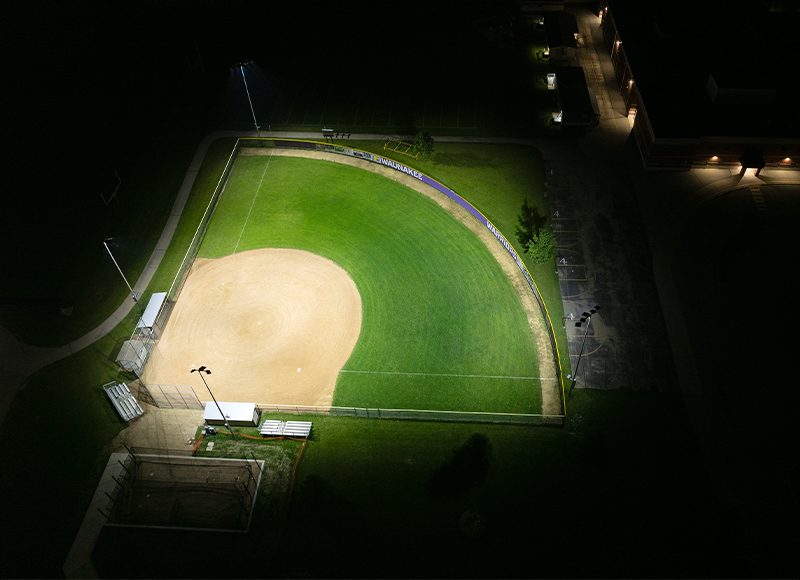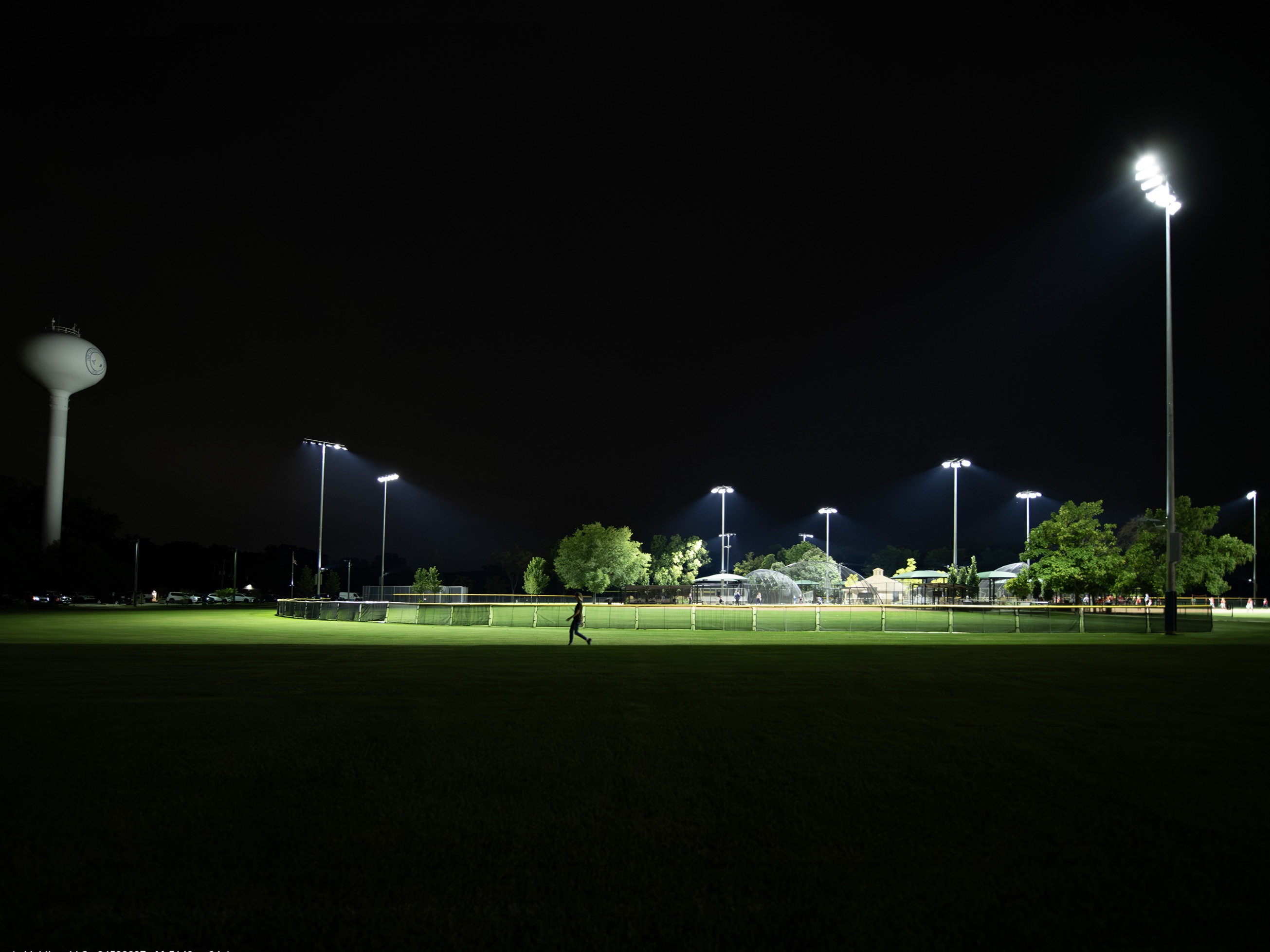
International Dark Sky Week (April 21-28) is an opportunity to highlight a growing trend in sports facility management and celebrate the facility managers and project planners who are going the extra mile to protect our night skies.
In recent years, more facilities from hometown fields to professional sports venues are embracing the Outdoor Sports Lighting guidelines established by DarkSky International, a global nonprofit that also provides third-party certification for outdoor sports facilities.
The parks and schools who follow DarkSky guidelines are modeling the potential for sports facilities to limit light pollution and sky glow while maintaining high standards for safety, playability, and fan experience.

Pioneers in DarkSky-Friendly Sports Facilities
Musco Lighting has specialized in light control for more than 50 years and has recently helped customers achieve DarkSky certification.
The City of Tupelo, Mississippi, recently made history with the state’s first DarkSky-certified outdoor sports lighting project at Dot Cooper Kelly Park. Their Musco-designed TLC for LED® lighting system provides high-quality, uniform illumination on their pickleball courts, without light spill or sky glow.
Ackerman Park in Glen Ellyn, Illinois, is the state’s first DarkSky Approved outdoor sports facility. A custom-designed TLC for LED® lighting system on their softball and soccer fields prevents light pollution from disturbing a four-lane road, residential housing, and ecological area that neighbor the facility.
High school facilities like Waunakee High School in Waunakee, Wisconsin, have also recognized the value of designing their facilities with DarkSky guidelines in mind.

Why They Say It’s Important
Why are DarkSky guidelines appealing to more facility managers? Here are five reasons:
1. It Sets a Positive Example: In addition to providing safe and enjoyable sports facilities, many facility managers recognize they have an opportunity to model best practices in a number of important areas, including energy conservation and environmental sustainability.
"We inherently have a strong environmental ethic at the park district, but it's also important, since we're a public agency, to set an example for the community," said Nathan Troia, director of planning at Glen Ellyn Park District.
2. It's Friendly to Neighbors: Many project planners have heard the horror stories of facilities that weren't allowed to turn on their lights - or had to keep them off - because of complaints from neighbors or an inability to comply with local lighting regulations. But putting those worst-case scenarios aside, proper light control is just the neighborly thing to do.
"What amazes me," said Alex Farned, park and recreation director for the city of Tupelo, "is you can be driving down the road a few blocks from the complex, and you wouldn't even know the lights are on."
3. There's no Tradeoff with Fan Experience: One of Southeast Idaho's top high school sports destinations, Ravsten Stadium, boasts a DarkSky-friendly design that made it simpler for the facility to comply with state and local lighting statutes - alongside other modern features that heighten the fan experience, including color-changing accents and light shows synchronized to music.
4. It Can Boost Convenience and Efficiency: For many facility managers, DarkSky-friendly lighting technology and control features - like remote scheduling and multi-level dimming - not only prevent over-lighting but also help conserve energy and reduce unnecessary staff trips to the field.
5. It Protects Wildlife and Ecosystems: Light pollution can be harmful to plants and animals, disrupting the natural rhythms that govern life-sustaining behaviors such as reproduction, nourishment, sleep, and protection from predators.
Musco can help you design a responsible lighting solution that aligns with DarkSky guidelines and reduces light pollution at your facility. For more information, visit this link.












